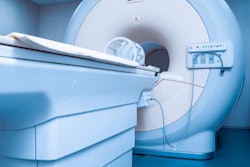
MRI-targeted biopsy prompted by elevated prostate-specific antigen (PSA) levels identifies fewer clinically insignificant prostate cancers than systemic biopsy, according to a paper published April 4 in the Annals of Internal Medicine.
And it's comparable to a systemic biopsy protocol for detecting clinically significant disease, wrote Dr. Richard Hoffman of the University of Iowa in Iowa City.
"[MRI-targeted] biopsy alone versus systemic biopsy after elevated PSA results detected fewer clinically insignificant prostate cancer cases," he noted. His commentary was submitted under the auspices of the American College of Physicians (ACP) Journal Club in response to a study released in 2022 in the New England Journal of Medicine (NEJM) that explored the efficacy of MRI-targeted biopsy after elevated PSA levels.
The biggest potential harms from PSA screening are overdiagnosis and overtreatment of low-risk disease, Hoffman explained. To further assess the NEJM results, he wrote a response paper that included data from 17,980 men between the ages of 50 and 60 who participated in the GöTEBORG prostate cancer screening 2 (Göteborg-2) trial.
The men had undergone PSA screening, and those with a PSA level equal to or more than 3 ng/mL had an MRI of the prostate followed by either an MRI-targeted biopsy alone for suspicious results or a systemic biopsy regardless of MRI results (and if needed, a targeted MRI biopsy of suspicious lesions). Of the total Göteborg study cohort, 11,986 men had an MRI-targeted biopsy alone and 5,994 had the systemic biopsy with MRI-targeted biopsy if indicated.
The MRI-targeted biopsy alone identified fewer low-risk prostate cancers compared with the systemic biopsy protocol and reduced the number of unnecessary biopsies performed. It also showed a similar rate of detection of clinically significant prostate cancer as the systemic approach, Hoffman noted.
| MRI-targeted biopsy alone compared with systemic biopsy after elevated PSA results | ||
| Type of identified prostate cancer | Systemic biopsy | MRI-targeted biopsy |
| Clinically insignificant (Gleason score 3+3) | 1.2% | 0.6% |
| Clinically significant (Gleason score equal to or greater than 3+4) | 1.1% | 0.9% |
The findings are "provocative but not practice-changing," Hoffman summarized, stating that since the Göteborg-2 trial was conducted at a single Swedish center, its results may not be generalizable. He wrote that "although reducing overdiagnosis is important, effectively reducing overtreatment depends on the uptake of active surveillance and adherence to monitoring protocols."
"Regardless of the biopsy strategy, men with low-risk prostate cancer should be encouraged to consider active surveillance as a way to reduce the potential harms of screening," Hoffman concluded.




















